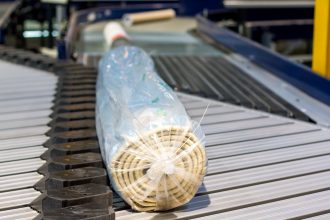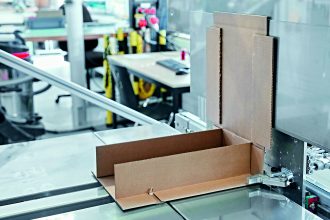Purchasing Conveyors with Sustainability in Mind

Equipment makers are building better products than before when it comes to efficiency and sustainability.
In all areas of the warehouse, companies are striving to reduce their carbon footprint. Focusing on key areas of equipment is one of the most accessible ways to do that, and equipment manufacturers are delivering. Today’s newest models are more efficient than ever, and it’s essential to purchase with that in mind.
Conveyors and sortation systems are part of the evolution to more efficient models. With a focus on improved power consumption, they are becoming more sustainable and contributing less to your carbon footprint. Due to their widespread use, equipment motors represent 45 percent of global electricity consumption, making efficiency all the more essential. They can also save users a substantial amount in energy costs.
The main area of focus to date when it comes to improving conveyor efficiency is the motor. Different standards organizations have created classes of standards, based on efficiencies. When shopping for a new conveyor system, you can work with your OEM to determine what options are available to you. The standards organizations include NEMA, the National Electrical Manufacturers Association, and the international equivalent, IEC, or the International Electrotechnical Commission.
When it comes to the motors that go into conveyors, NEMA ranks them into four levels of efficiencies, while the IEC has five classes, the latest being IE5. NEMA’s equivalent is yet to be named, although most call it “ultra super premium.” The first three levels of IEC—1, 2, and 3—loosely equate to NEMA’s first three standards. Depending on which OEM you work with, you can look for whichever set of relative standards they use and make your selections based on that information. Many end users are requesting that their motors feature the most efficient, which is IE5. The thinking behind this is that it will remain current for years to come.
Currently, with all the focus on the efficiency of the motors, OEMs and end users are sometimes overlooking an essential piece of the equation, which is the gear box. You might have an efficient, new motor, but if the gear box is dated, it will limit the gains you can achieve. The components matter as much as the motor, and the right gear box can ensure you’re getting all the efficiencies you want from the motor—and vice versa.
Some estimates suggest that a combination of high efficiency motor with a high efficiency gear box can lead to savings in the range of 30 percent to 50 percent, when compared to less efficient combinations.
To know whether or not your conveyor motor is matched to an efficient gear box, you’ll need to inquire with your OEM partner. They should have all the details on the motor standards, and the components that complement it.
Moving away from the old-style, less efficient conveyor motors—and their less efficient gear boxes—will help both your bottom line, and the planet. Take the time to do your homework before making a capital investment.
To learn more about MHI’s Conveyor and Sortation Solutions Industry Group: www.mhi.org/conv
For more articles and podcasts about Conveyors and Sortation:
Using Conveyors for Loading and Unloading Trucks & Containers
Podcast: CSS – HOW TO AUTOMATE FOR THOSE WHO HAVEN’T AUTOMATED
Reconfigurable Conveyors For The Win
The Importance Of Digitization In Material Handling
Why You Should Consider Decentralized Networks
Podcast: CSS – HOW TO AUTOMATE FOR THOSE WHO HAVEN’T …



